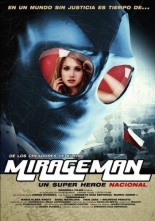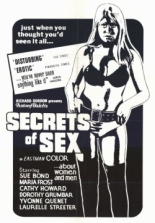
 If I were in charge, I’d give DarkWolf the more appropriate title of An American Werewolf in Do-Rag, as Kane Hodder (Jason Voorhees in several of the Friday the 13th sequels) plays his role as the horny-werewolf-disguised-as-human with a blue handkerchief tied around his thick noggin for the whole movie.
If I were in charge, I’d give DarkWolf the more appropriate title of An American Werewolf in Do-Rag, as Kane Hodder (Jason Voorhees in several of the Friday the 13th sequels) plays his role as the horny-werewolf-disguised-as-human with a blue handkerchief tied around his thick noggin for the whole movie.
Hodder is the “DarkWolf” — a hybrid werewolf, explains an all-too-knowing policeman — who must mate with a chosen female in order to ensure the survival of its species. (Its acquisition of a capital W goes unexplained.) The chosen female is a blonde waitress (Samaire Armstrong, TV’s The O.C.) who has no idea of her fate, but soon learns when her “protector” — The Birds‘ Tippi Hedren as cinema’s most well-dressed homeless woman — is slain by the creature, as is the cop’s partner, airheaded Playboy Playmate Jaime Bergman.
 Everyone in this straight-to-DVD pile of wolf poo is so unlikable, you wish the DarkWolf would kill them all, and then do himself in. But yet, DarkWolf feels the need to plod along on its grubby paws for an hour and a half, occasionally throwing in just enough gratuitous nudity to keep you from hitting “stop.”
Everyone in this straight-to-DVD pile of wolf poo is so unlikable, you wish the DarkWolf would kill them all, and then do himself in. But yet, DarkWolf feels the need to plod along on its grubby paws for an hour and a half, occasionally throwing in just enough gratuitous nudity to keep you from hitting “stop.”
The acting is atrocious, even for a straight-to-video movie of this kind, and the werewolf transformation scenes are downright embarrassing. Whenever it’s time for one of those, the movie turns into a poorly computer-animated cartoon! —Rod Lott


 Roughly the 24th
Roughly the 24th 

 One of the best superhero movies you’re likely never to have seen hails from South America:
One of the best superhero movies you’re likely never to have seen hails from South America: 

 As far as I know,
As far as I know, 